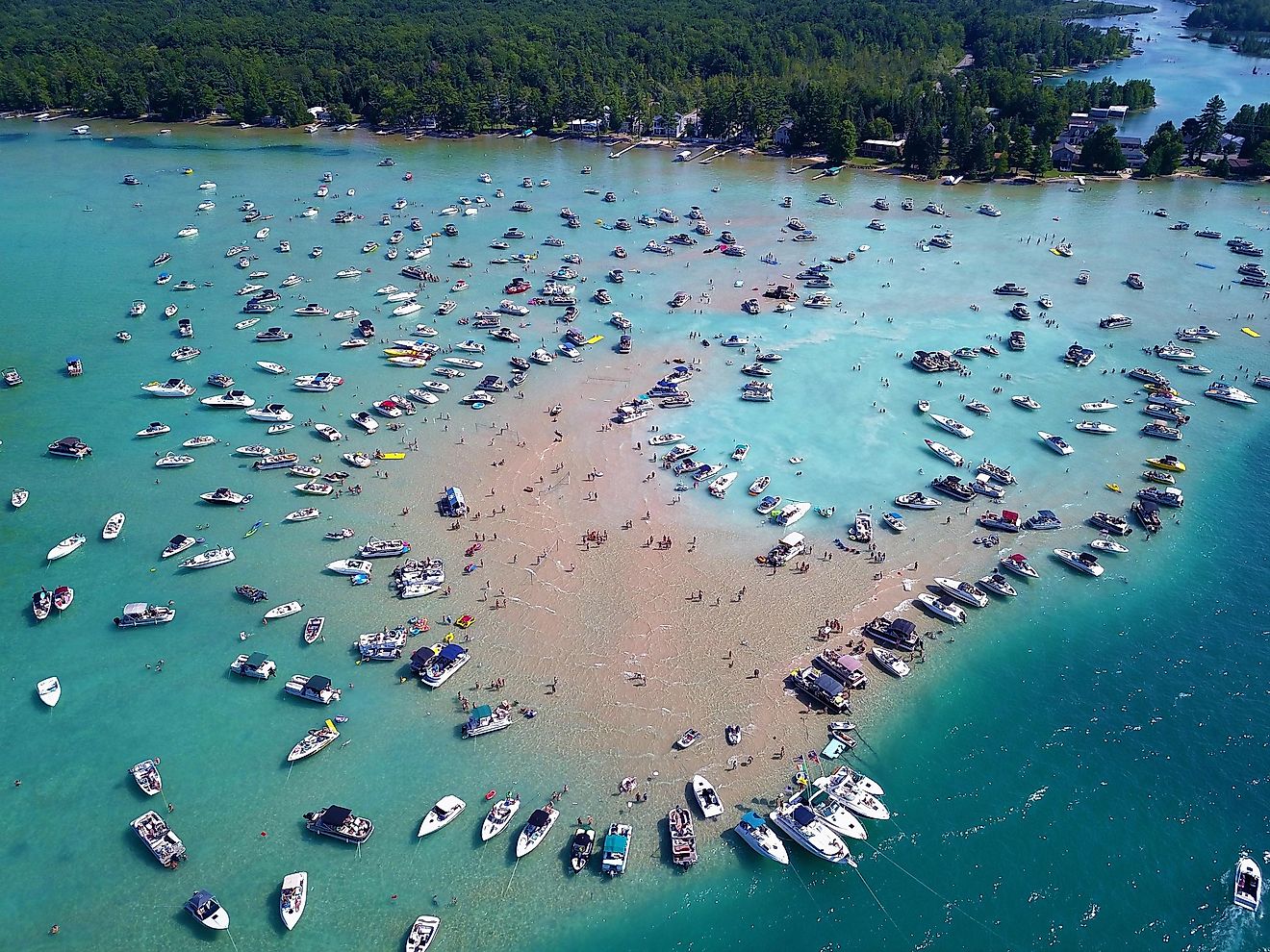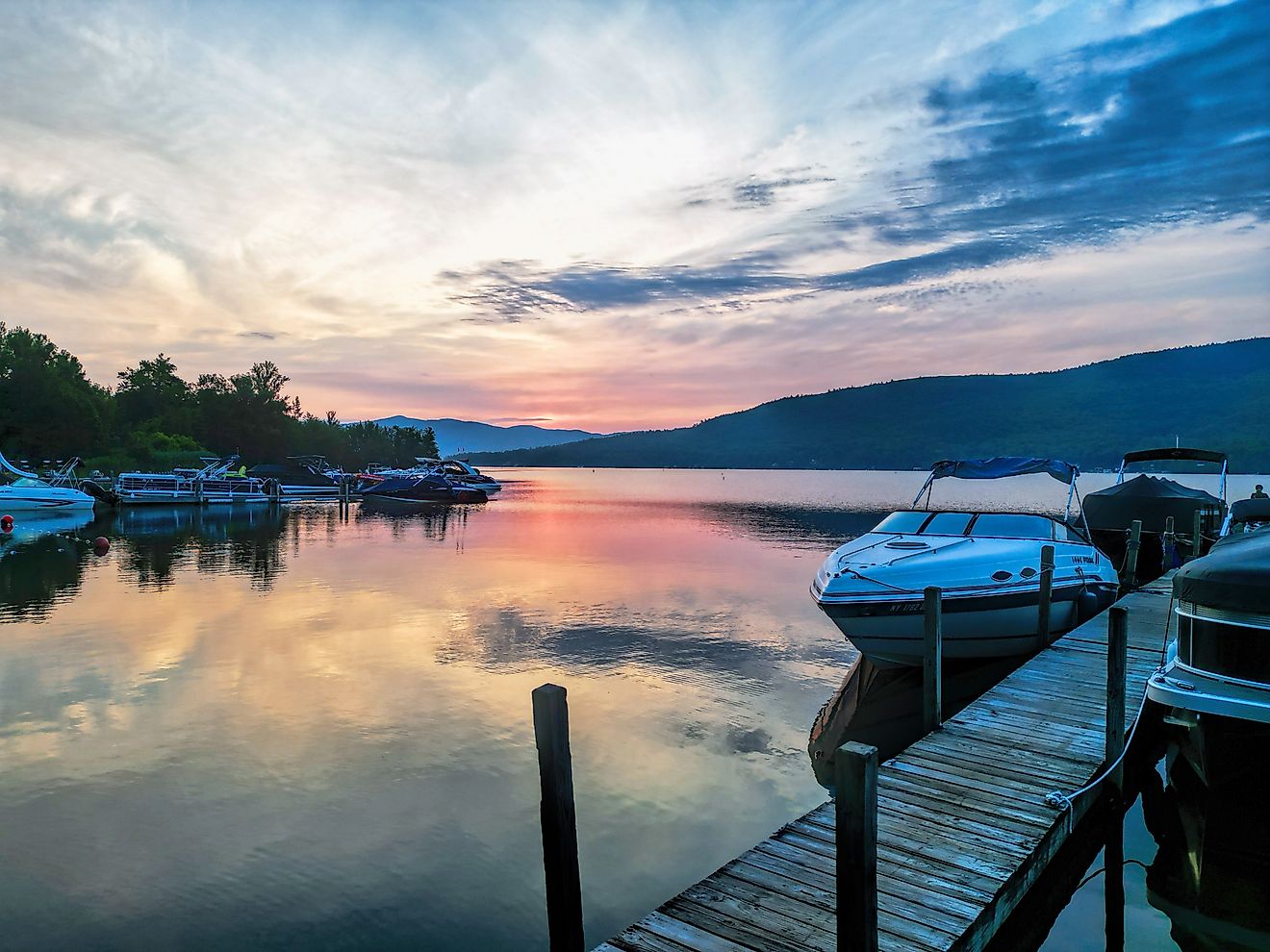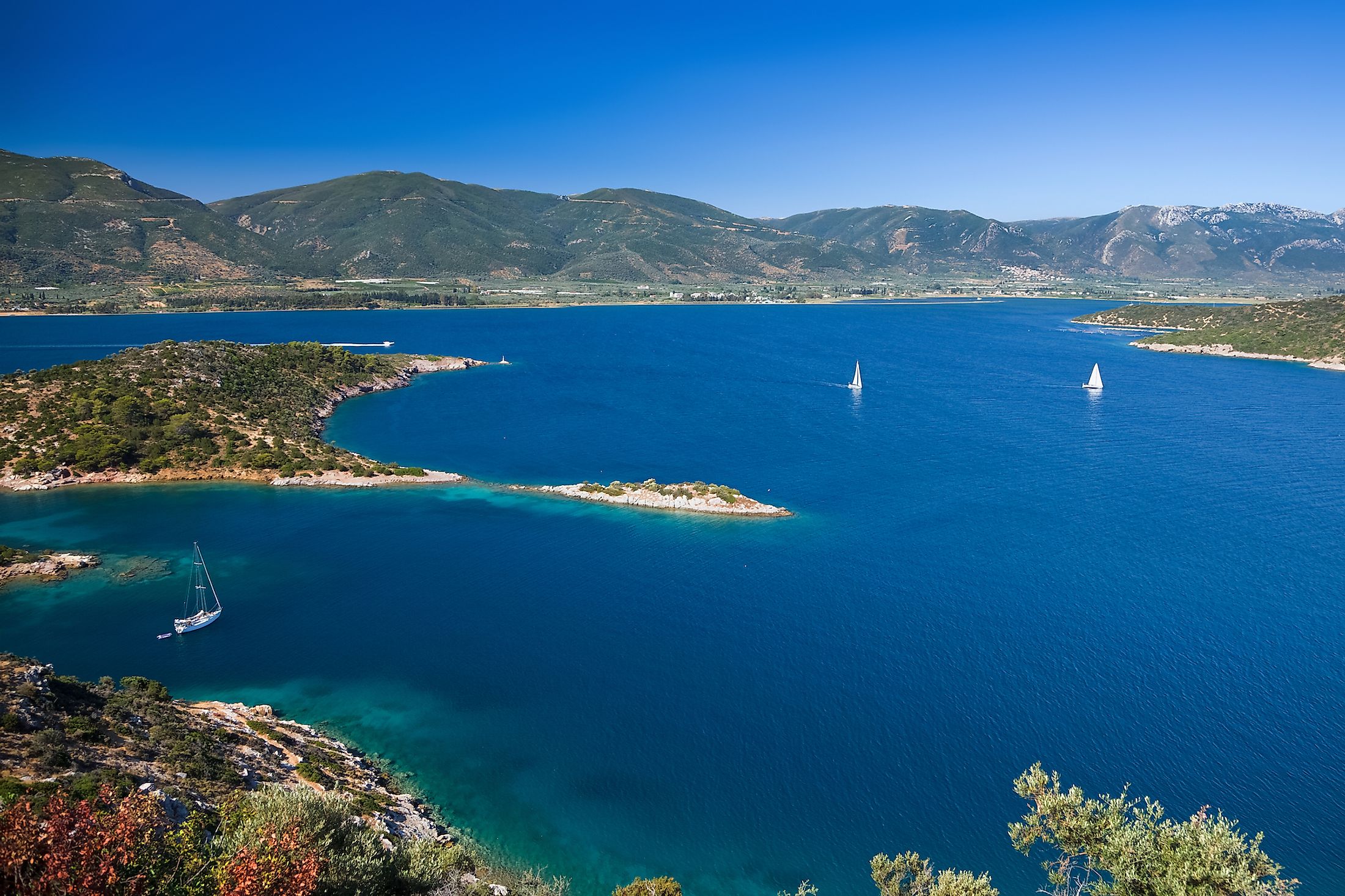
Aegean Sea
The Mediterranean Sea is the world’s tenth-largest sea, spanning over 2.5 million km2. It accounts for about 0.7% of the Global Ocean and is connected to the Atlantic Ocean by a narrow strait known as the Strait of Gibraltar. The Mediterranean Sea is made up of 12 marginal seas of varied surface area. One such subdivision of the Mediterranean Sea is the Aegean Sea. It is the Mediterranean’s fourth-largest marginal sea, covering 214,000 km2.
Where Is The Aegean Sea?
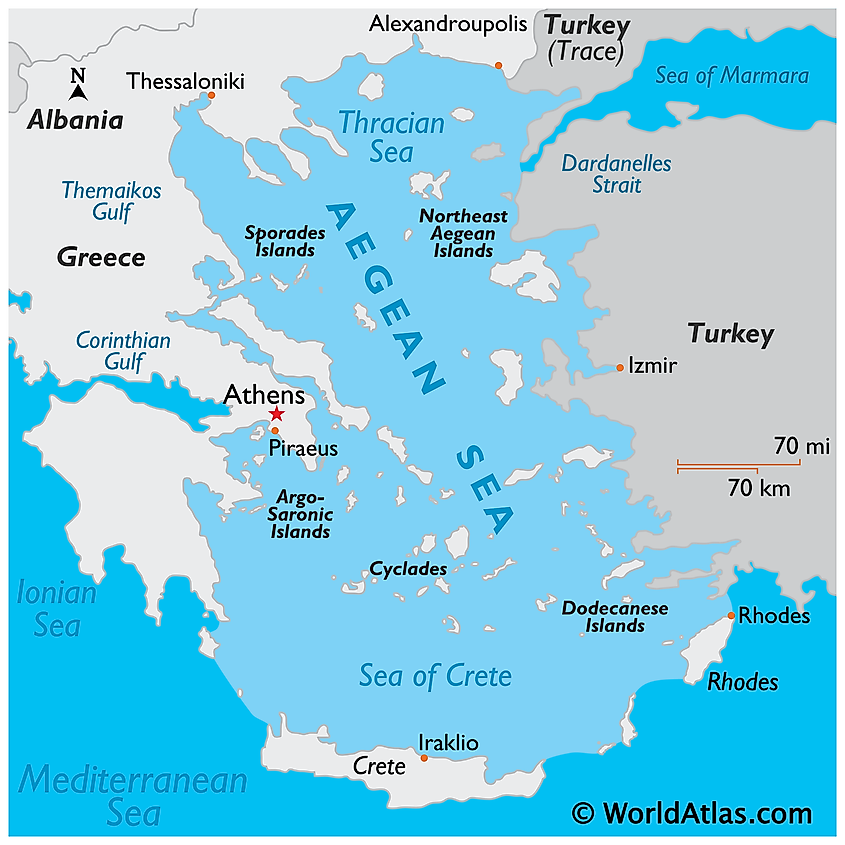
Those who have read about the mythical Trojan War or studied their bibles may have come across the Aegean Sea. For years, heroes both mythical and real crisscrossed the sea during their explorations and travels. However, the Aegean Sea is not mythical. It is a real sea and an extension of the Mediterranean Sea.
The Aegean Sea has a surface area of about 215,000 km2 and a depth of 3,544 m at the deepest end. It has a maximum length of about 700 km and a width of 400 km. The Bosphorus and Dardanelles Straits connect the Aegean Sea to the Black Sea and the Marmara Sea respectively. The Aegean is subdivided into the Myrtoan Sea and the Thracian Sea (marked on the map above) and lies on the African and Eurasian tectonic plates' collision path, making the region one of the most seismically active areas in the Mediterranean.

The sea is situated between the Anatolia and Balkan peninsulas and lies between Turkey and Greece. Nine out of 12 of Greece’s administrative regions border the sea. Turkish provinces, such as Balikesir, Canakkale, Edirne, and Izmir, borders the Aegean to the east. The Aegean Sea is a source of dispute and controversy between Turkey and Greece, affecting their relationship since the 1970s.
Origin Of The Name
According to Greek Mythology, the name “Aegean Sea” is credited to Aegeus. According to a legend, King Minos of Crete wanted to punish the Athenians for killing his son Androgeus. Androgeus was a talented athlete who defeated Aegeus in every Panathenaic Games. Because Aegeus was envious of the young athlete, he convinced him to fight with a Cretan bull which killed him.
Because of his son’s death, King Minos declared war on the Athenians and won, with the Athenians becoming his subject. The king demanded a tribute from the Athenians, which was to be paid every nine years. 14 Athenian boys and girls were to be sent to Crete to be sacrificed. They were to be killed by Minotaur, a mythical creature with a bull’s head and human body.
Aegeus’ son, Theseus, and Aithra decided that they would go and kill Minotaur to end the Athenians' suffering. He replaced one of the boys and departed for Crete. Before they left, Aegeus agreed with the son that they would hoist a black sail if they were defeated and a white sail if they killed the monster. On his way, Theseus met and fell in love with Ariadne, King Minoa’s daughter, who gave him a clue on how to escape after killing the monster. Theseus managed to kill the monster. However, on their way back, the people forgot to raise the white sail. As they approached the shores, Aegeus spotted the ship with a black sail and believed that his son had been killed. In despair, Aegeus jumped into the sea and died.
Islands In The Aegean Sea
The Aegean Sea has over 1,400 islands of varying sizes and formations. The majority of the islands are administered by Greece, with Turkey claiming a few of these islands. Because these islands are many, they are broadly divided into seven groups.
North Aegean Islands: North Aegean Islands are islands on the Aegean Sea that are grouped together for administrative or tourist purposes. These islands do not form a group or chain, with the majority of the islands belonging to Greece. The main Greek island in this group are the Chios, Samos, Lemnos, Ikaria, Lesbos, Psara, and Rhodes. The Turkish Islands are Tenedos, Imbros, and the Rabbit.
West Aegean Islands: The main West Aegean Island is the Euboea Island, separated from mainland Greece by Euripus Strait. It is Greek’s second-largest island after Crete and has a population of about 198,000 people.
Sporades: Sporades Islands are located on the east coast of Greece. It is made up of 24 islands, four of which have permanent populations. These four islands are Skyros, Alonnisos, Skopelos, Skiathos.
Cyclades: The Cyclades are located southeast of Greek’s mainland. The island group is made up of 220 islands, with Naxos as the largest island and Syros the most populous one. Other islands include Amorgos, Andros, Delos, Milos, Paros, and Sifnos.
Saronic Islands: the Saronic Islands are located within the Saronic Gulf, off the mainland of Greece. Its inhabited and main islands include Poros, Agistri, Aegina, and Salamis. These islands host most Greek vacation homes and can be accessed by ferries.
Dodecanese: The Dodecanese is a group of 15 major and 150 small islands located on the southeastern part of the Aegean Sea. 26 of these islands are inhabited, including Rhodes, Patmos, Chalki, Kasos, Symi, and Kalymnos.
Crete: Crete is the largest Greek island and the world’s 88th largest. It borders the southern part of the Aegean Sea and has a population of approximately 635,000 people. Crete and the surrounding islands form the Crete Region.
The Climate Of The Aegean Sea
The Aegean Sea experiences a Mediterranean climate, experienced in Western Turkey and Greece. The climate is defined as Hot-summer Mediterranean, characterized by drier and hotter summers and wetter and milder winters. During summers, the region experiences lower temperatures than arid and semi-arid climates. The climate of the northern portion of the Aegean Sea can be classified as cold semi-arid, characterized by cooler summers. The weather in the Aegean basin is mainly influenced by the Etesian wind.
Brief History
Before the Aegean coastline formed, the water levels were about 130 meters lower. Some of the islands, such as the Milos, were still linked to the mainland. The present-day coastline may have appeared around 4000 BCE.
Europe’s first advanced civilization began on the Aegean islands, including Crete during the Minoan Civilization, which flourished between 3000 and 1450 BCE. The Bronze Age civilization resulted in stunning artworks, complex buildings, and extensive trade networks.
Several Greek cities emerged between the 8th and 6th centuries, notable ones including Sparta, Athens, Thebes, and Corinth. These cities were close to the Aegean Sea. Soon, the Aegean Sea came under the control of Alexander the Great and his father Philip II. After Alexander the Great's death, his generals divided the kingdom among themselves, making it easier for the Roman Empire to conquer some of them. The subsequent fall of the Roman Empire gave way for the Byzantine Empire to dominate the Aegean Sea up to around the 14th century.
Following the fall of the Byzantine Empire, the Ottoman Empire took control of the Aegean coast, except Crete. The Ottomans’ presence on the sea lasted over 500 years until after World War I. Subsequently, Turkey and Greece took over the control of the sea, with each country resuming its present-day border.
Human Settlements Along The Aegean Sea
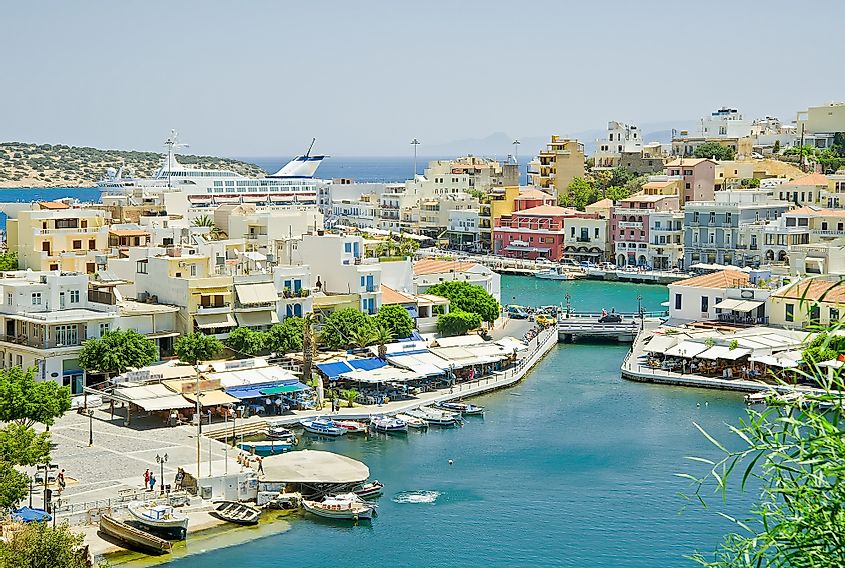
The Aegean islands and mainland coast are inhabited mainly by Turkish and Greek populations. The settlements are located along the coast, while the islands host some of the largest towns and cities. Athens is the largest city located near the Aegean Sea, with a population of approximately 3.1 million. It is connected to the Greek islands by the Port of Piraeus. The most populous Turkish city closest to the Aegean Sea is Izmir, with a population of about 2.9 million people.
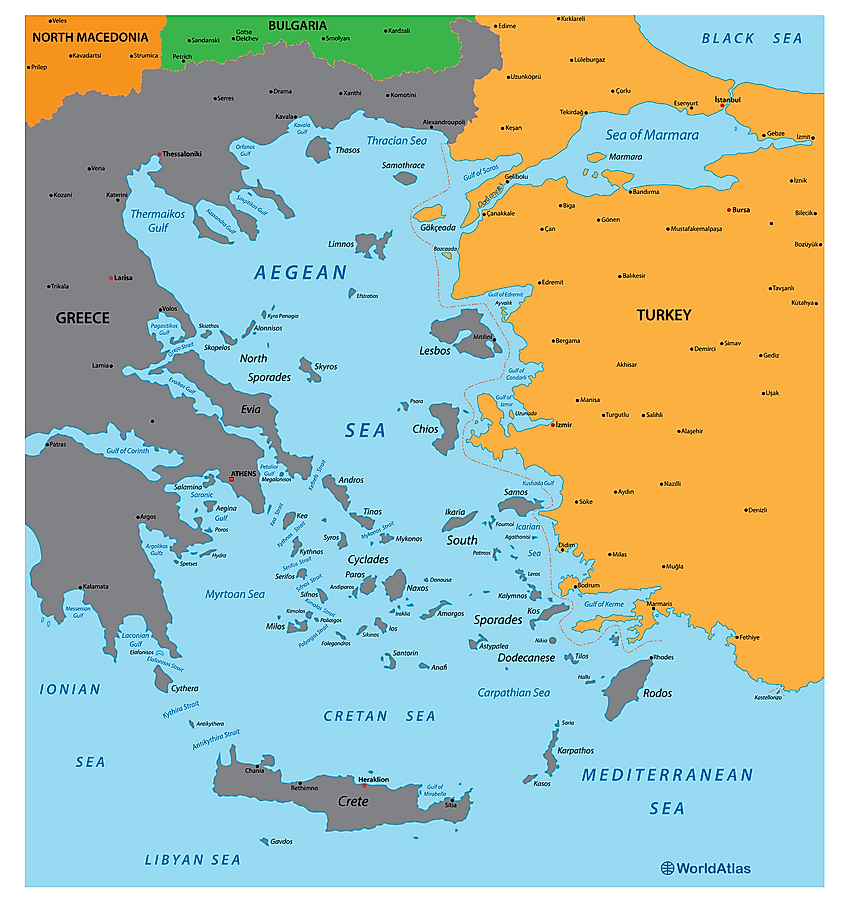
Table 1: The 10 Most Populous Urban Area Along The Aegean Sea Coast
|
Rank |
City |
Region/County |
Population (urban) |
|
1 |
Athens | Greece | 3,090,508 |
| 2 | İzmir |
Turkey |
2,947,000 |
|
3 |
Thessaloniki |
Greece |
824,676 |
|
4 |
Heraklion |
Greece |
173,993 |
|
5 |
Volos |
Greece |
144,449 |
|
6 |
Çanakkale |
Turkey |
111,137 |
|
7 |
Chania |
Greece |
108,642 |
|
8 |
Rhodes (city) |
Greece |
86,199 |
|
9 |
Alexandroupoli |
Greece |
72,959 |
|
10 |
Kavala |
Greece |
70,501 |
Crete is the most populated island in the Aegean Sea, with a population of approximately 635,000 people. The island has been inhabited for over 130,000 years and was Europe’s first center of civilization. The second-most populous island is Euboea Island, with a population of about 190,000 people.
Marine Life And Protected Areas
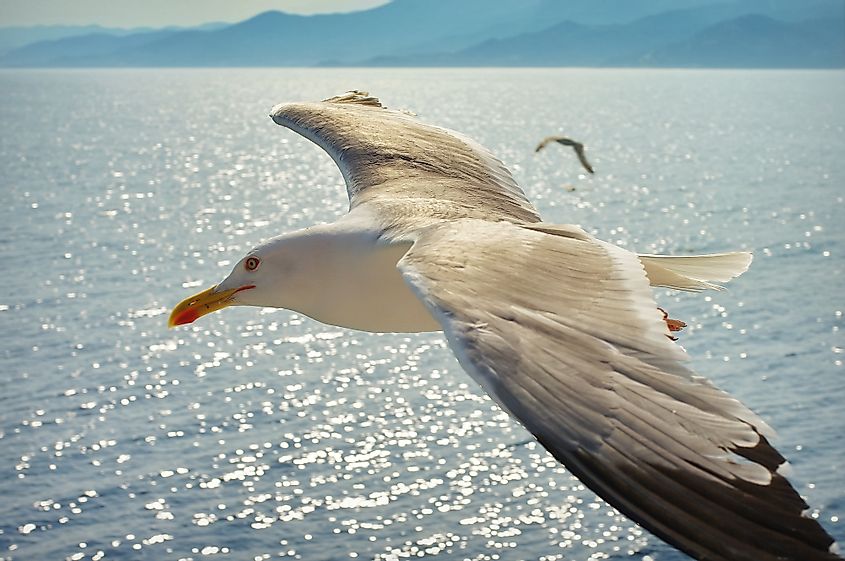
The Aegean region hosts over 3,300 plant species, of which 685 species are endemic to Greece and 478 species are endemic to the Aegean. Some of the species occur exclusively on the islands, while others occur on the seafloor. East Aegean boasts of the highest number of marine species, while the Cyclades is species impoverished. Kriti is considered the biodiversity hotspot not only in the Aegean but the entire Mediterranean Sea. Several Mediterranean monk seal, sharks, whales, dolphins, and sea turtle species inhabit the sea. Sponges, fish, and sardines are also found in plenty throughout the Aegean Sea and support the large scale fishing industry.
Human activities on the Aegean Sea have been going on for thousands of years in form of shipping and fishing. Pollution and coastal urban development have also characterized the sea. These activities have led to catastrophic consequences, including oil spills, marine accidents, and depletion of the marine stock. Thus, Greece has marked some of its coastal areas as a marine protected area. Currently, four of Greek’s marine protected areas are participating in the Network of Managers of Marine Protected Areas, including Alinnosos Marine Park.
Economy
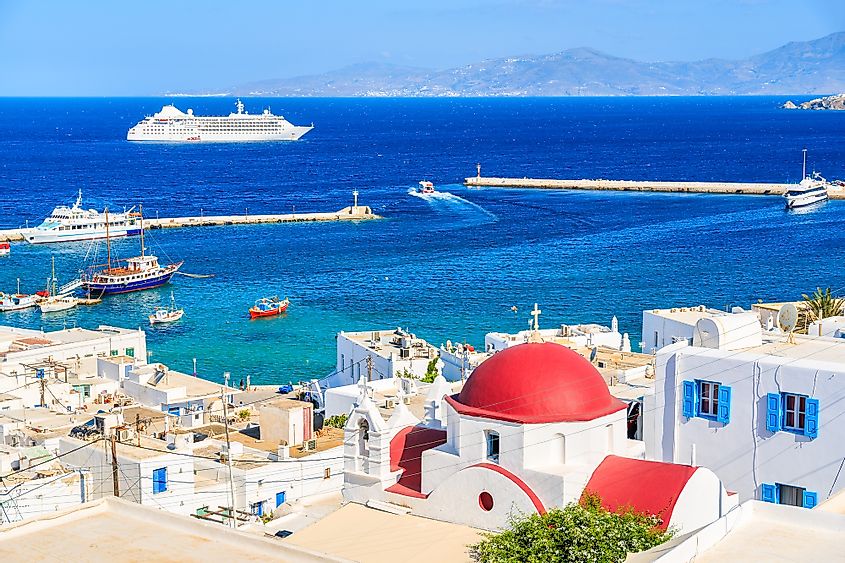
The Aegean is a major fishing ground, with Greece having the second-largest fleet in Europe. Fish is one of Greece’s largest agricultural exports. The major fish captured in the Aegean Sea include gray mullets, sardines, sea bass, groupers, and mackerel. The Aegean coast is also home to several ports, including the Port of Piraeus. It is Europe’s largest passenger port and services over 15 million passengers annually. The port also links Athens to the Aegean island.
The islands are also major tourist destinations. There are five UNESCO World Heritage Sites on the Aegean Islands, making them one of Turkey and Greece's most visited places. Tourism accounts for about 25% of Greece’s GDP. Turkey and Greece have also successfully developed resort areas that have attracted a large number of tourists.










